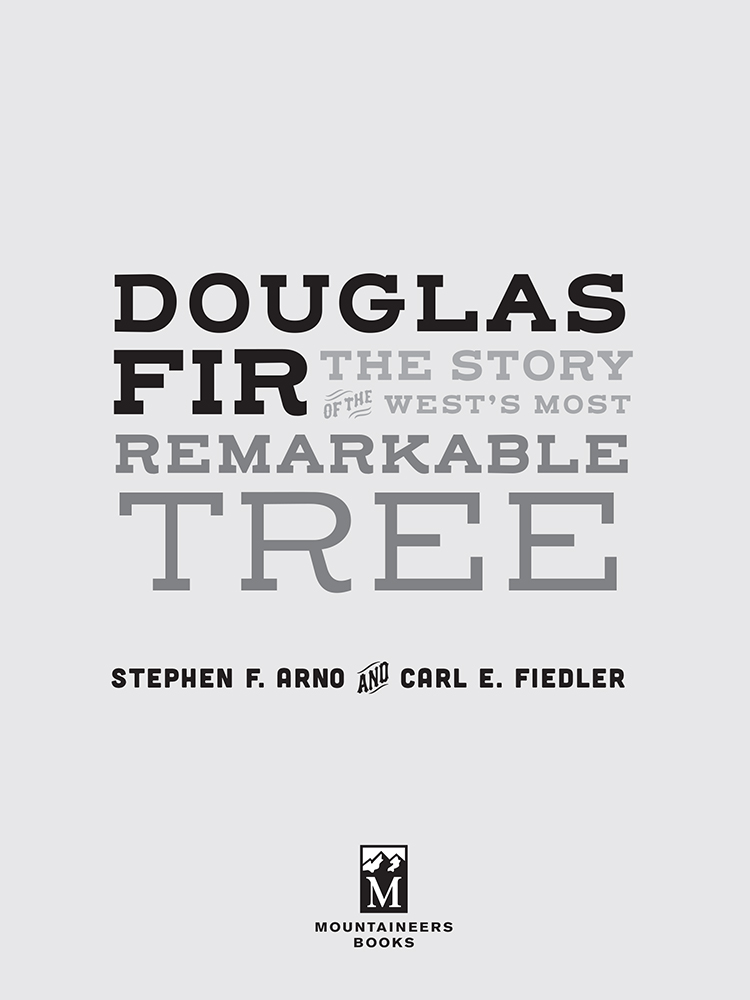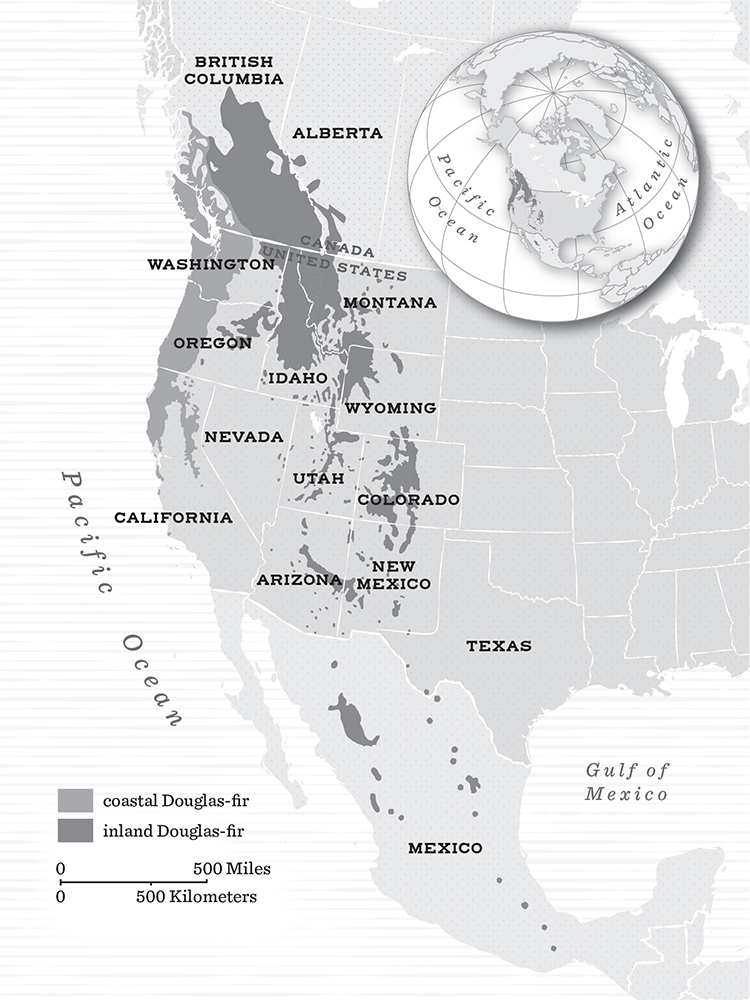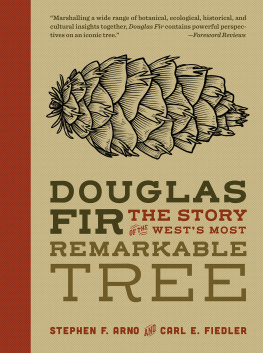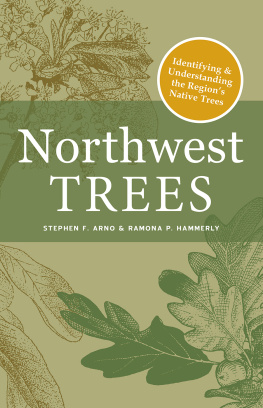Stephen F. Arno - Douglas Fir
Here you can read online Stephen F. Arno - Douglas Fir full text of the book (entire story) in english for free. Download pdf and epub, get meaning, cover and reviews about this ebook. publisher: Mountaineers Books, genre: Romance novel. Description of the work, (preface) as well as reviews are available. Best literature library LitArk.com created for fans of good reading and offers a wide selection of genres:
Romance novel
Science fiction
Adventure
Detective
Science
History
Home and family
Prose
Art
Politics
Computer
Non-fiction
Religion
Business
Children
Humor
Choose a favorite category and find really read worthwhile books. Enjoy immersion in the world of imagination, feel the emotions of the characters or learn something new for yourself, make an fascinating discovery.
- Book:Douglas Fir
- Author:
- Publisher:Mountaineers Books
- Genre:
- Rating:3 / 5
- Favourites:Add to favourites
- Your mark:
- 60
- 1
- 2
- 3
- 4
- 5
Douglas Fir: summary, description and annotation
We offer to read an annotation, description, summary or preface (depends on what the author of the book "Douglas Fir" wrote himself). If you haven't found the necessary information about the book — write in the comments, we will try to find it.
Douglas Fir — read online for free the complete book (whole text) full work
Below is the text of the book, divided by pages. System saving the place of the last page read, allows you to conveniently read the book "Douglas Fir" online for free, without having to search again every time where you left off. Put a bookmark, and you can go to the page where you finished reading at any time.
Font size:
Interval:
Bookmark:

Arno and Fiedler have crafted an insightful and engaging paean to the Pacific Northwests most important tree. This is a book for anyone who wants to understand not only the ecological story of Douglas-fir but also how these majestic trees shaped the economic story of Puget Sound and the entire region.
David B. Williams, author, Too High and Too Steep: Reshaping Seattles Topography
Stephen Arno and Carl Fiedlers inviting text Douglas Fir is filled with information about the versatile, resilient conifer that from firewood to flumes, flagpoles to flooring, snowshoes to spars, and liquor to lumber [fills] needs or niches in the lives of everyday people.... Featuring multiple illustrations, historical photographs, and a list of notable Douglas-firs to visit across the US and Canada, the book is a comprehensive look at the fascinating tree.
Foreword Reviews
This book is a gift to those of us who love trees. It reflects decades of observation and research by two dedicated scientists, but is far more than a simple botanical treatise about a dominant forest tree. The authors not only tell the story of Douglas-fir as a species but describe in fascinating detail how our human relationship with this iconic, truly extraordinary tree has shaped our ecosystems, our history, our economy and our cultures in so many different ways. This affectionate yet rigorously documented book should be a must for any library specializing in environment, history or politics.
Nancy J. Turner, ethnobotanist and distinguished professor emeritus, environmental studies, University of Victoria
The Douglas-fir of North America is an outstanding tree in many respects. Its beauty, great size and age, and role as a keystone species have given it a central emotional, spiritual and ecological role in the celebrated old-growth forests of the Pacific Northwest. For over 6,000 years humans in western North America have had a close cultural relationship with this species, and today, it is widely planted on six continents and ranks as the most economically important softwood timber species in the world. Arno and Fiedler have captured the cultural and ecological diversity of this extraordinary tree in a detailed and engrossing study that weaves science, history, and insight into a memorable book that will be enjoyed by all who love the native forests of the West.
Chris Earle, forest ecologist and founder of Conifers.org


MOUNTAINEERS BOOKS is dedicated to the exploration, preservation, and enjoyment of outdoor and wilderness areas.
1001 SW Klickitat Way, Suite 201, Seattle, WA 98134
800-553-4453, www.mountaineersbooks.org
Copyright 2020 by Stephen F. Arno and Carl E. Fiedler
All rights reserved. No part of this book may be reproduced or utilized in any form, or by any electronic, mechanical, or other means, without the prior written permission of the publisher.
Mountaineers Books and its colophon are registered trademarks of
The Mountaineers organization.
Printed in Canada
Distributed in the United Kingdom by Cordee, www.cordee.co.uk
23 22 21 201 2 3 4 5
Copyeditor: Mindy Seale Fitch
Design and layout: Jen Grable
Cartographer: Martha Bostwick
Illustrator: Zoe Keller, www.zoekeller.com
Cover design: Jen Grable
Cover illustration: Zoe Keller
Library of Congress Cataloging-in-Publication Data record is available at https://lccn.loc.gov/2020004770.
Mountaineers Books titles may be purchased for corporate, educational, or other promotional sales, and our authors are available for a wide range of events. For information on special discounts or booking an author, contact our customer service at 800-553-4453 or .
 Printed on recycled, FSC-certified materials
Printed on recycled, FSC-certified materials
ISBN (hardcover): 978-1-68051-199-4
ISBN (ebook): 978-1-68051-200-7

To Dr. Roland Rethke, who in the early 1960s chose to inspire me and other students at Olympic (Junior) College to learn about forest ecology when he could have joined the faculty of a major university
Stephen Arno
To my brothers, David and Mark, and the many other friends whose help allowed me to continue working on this book despite my medical problems
Carl Fiedler


Source: Data drawn from Volume 1 of Atlas of United States Trees, by Elbert Little Jr., published by the US Department of Agriculture, 1971, and from field observations reported by Debreczy and Racz, 1995.
Most westerners familiar with native forests probably think they know the Douglas-fir, which is after all one of our most common trees, indigenous to all the western states, western Canada, and the high mountains in Mexico.
However, few people realize the many forms and strategies Douglas-fir adopts to occupy more kinds of habitats than any other American tree. The species comprises two varietiescoastal Douglas-fir and inland, or Rocky Mountain, Douglas-firand includes the giants of the coastal forest, luxuriant conical trees in young stands, stout old sentinels along grassy ridges, and wind-sculpted dwarfs clinging to high mountain slopes. Douglas-fir occupies both damp habitats, such as ravines and north-facing slopes, and droughty ones, such as south-facing slopes, and nearly all sites between.
In moist environments, coastal Douglas-fir is a pioneer species one that depends on fires, logging, and other major disturbances to create the open conditions that allow it to establish and avoid stifling competition from shade-tolerant species like western hemlock and Sitka spruce. These shade-tolerant species, unlike coastal Douglas-fir, can produce abundant saplings beneath the mature tree canopy and eventually form thickets of young trees that, without another disturbance, gradually replace aging Douglas-firs and take over the forest in perpetuity.
Douglas-fir also inhabits some of the hottest environments, such as sunbaked rocky islands in Washingtons San Juan archipelago, and the coldest ones that any trees can tolerate, including subalpine forests along the Continental Divide in Montana and Wyoming.
Both coastal and inland Douglas-fir are exceptionally resilient and quick to colonize following disturbances such as wildfire, logging, land clearing, and even residential developments, where it may later appear as a beautiful volunteer in a suburban yard. In the drier, fire-dependent forests of the interior West, some people view inland Douglas-fir as a sort of uncontrollable noxious weed, even though human efforts to eliminate fire are largely responsible for its proliferation. In inhospitable environments, Douglas-fir alone forms the native forest whether there are disturbances or not, such as in the high semi-arid mountains of southwestern Montana and southeastern Idaho, where the inland variety is the only erect tree. To sum up its adaptability, Douglas-fir is natures all-purpose tree.
Font size:
Interval:
Bookmark:
Similar books «Douglas Fir»
Look at similar books to Douglas Fir. We have selected literature similar in name and meaning in the hope of providing readers with more options to find new, interesting, not yet read works.
Discussion, reviews of the book Douglas Fir and just readers' own opinions. Leave your comments, write what you think about the work, its meaning or the main characters. Specify what exactly you liked and what you didn't like, and why you think so.











